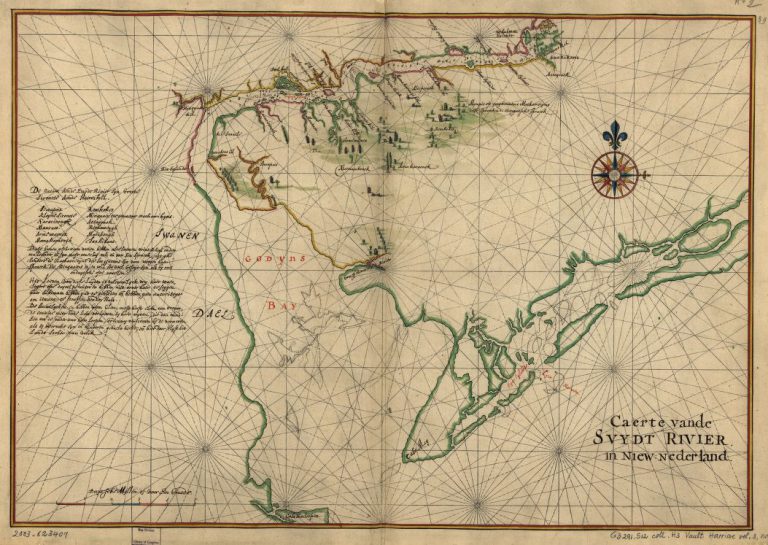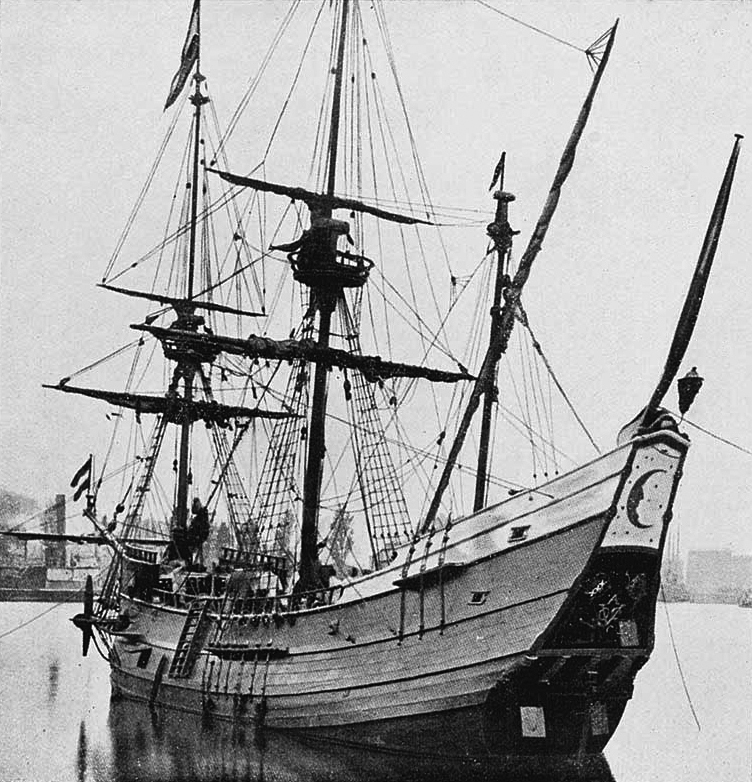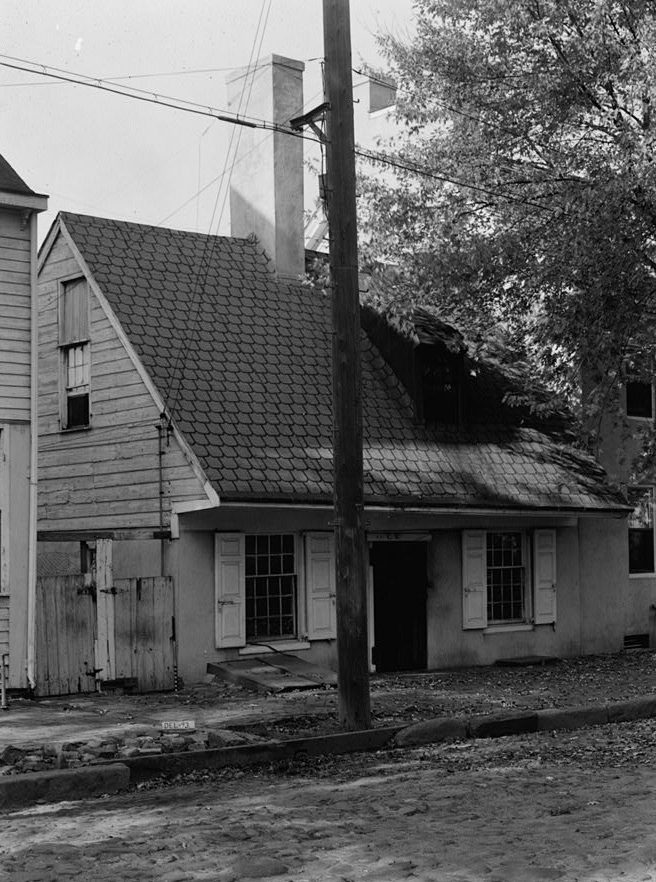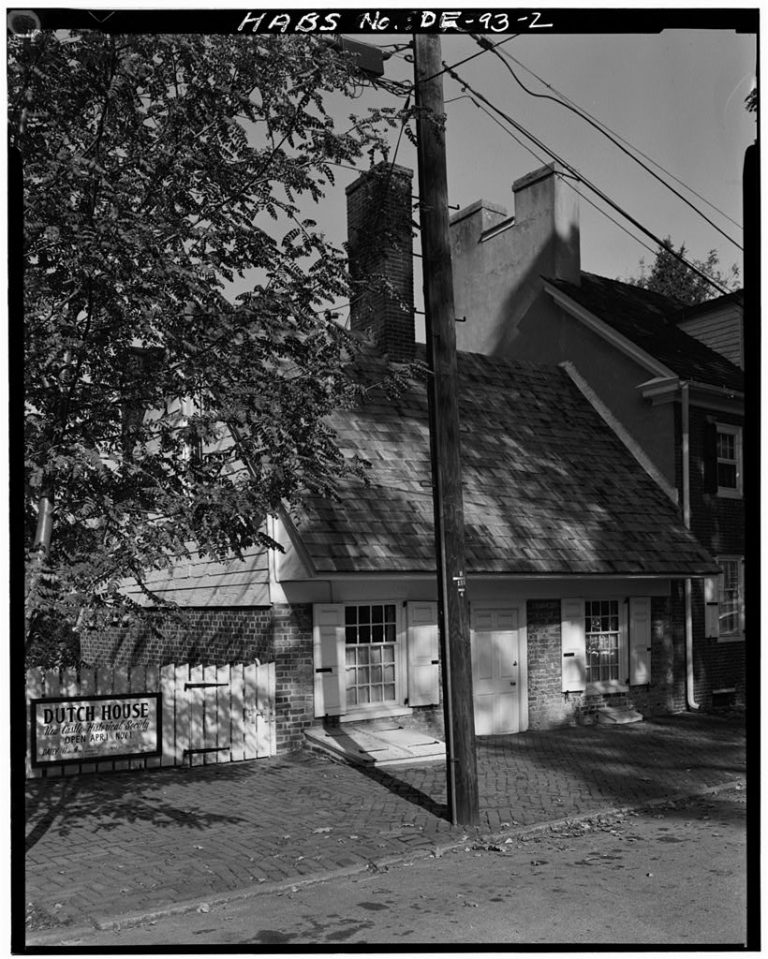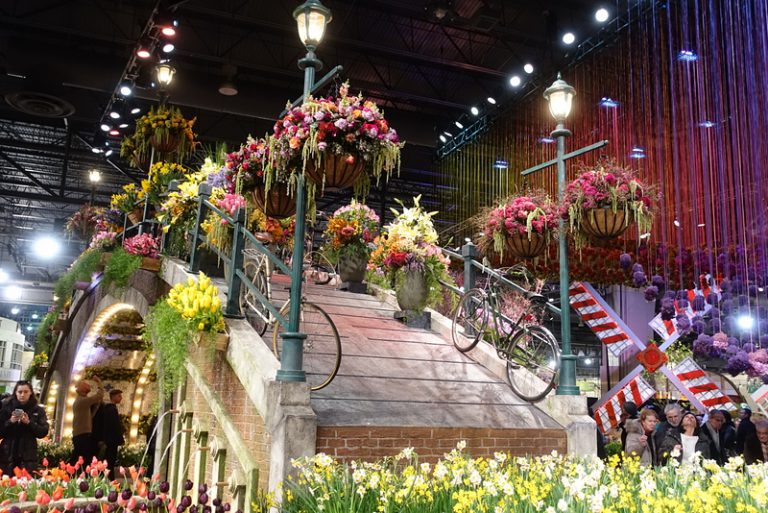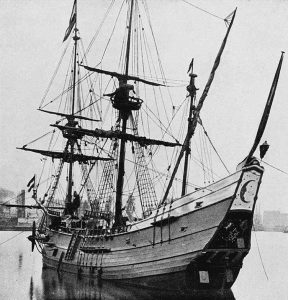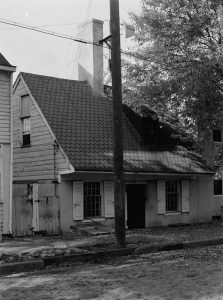Dutch (The) and The Netherlands
By Laura Michel
Essay
From seventeenth-century Dutch settlements in the Delaware Valley to twenty-first century business connections, the greater Philadelphia area has had longstanding and meaningful ties with the Netherlands. Not to be confused with the more numerous Pennsylvania Dutch—who are in fact German, or Deutsch, speakers—Nederlanders helped shape Philadelphia through migration and cultural, social, and economic exchange.
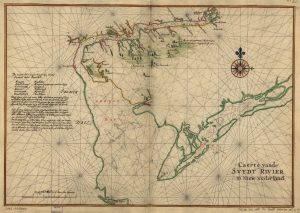
The Dutch played an important, though little recognized, role in the early European colonization of the region. From 1614 until the English seized the province in 1664 the Dutch colony of Nieuw Nederland (New Netherland) included parts of the future states of New Jersey, Pennsylvania, Delaware, Connecticut, New York, and Maryland. Settlement and trade along New Netherland’s Zuyd (South) River—the Delaware River—was limited compared to activity around the seaport city of Nieuw Amsterdam (later New York), but nevertheless significant to the region’s development.
The first director of New Netherland, Cornelius Mey (c.1580–?), originally envisioned the Delaware Bay as the ideal location for the colony’s capital. As a sea captain, Mey was one of the first Europeans to explore the New Jersey coast, and in 1624 he oversaw an initial settlement of two families and eight men on an island in the Delaware River. Known as Mattennecunk by the original Lenni Lenape inhabitants and Hooghe Eylandt (High Island) by the Dutch, the capital that Mey envisioned was short-lived. In 1626, then-director Peter Minuit (c.1580–1638) decided that the Noort (North) River (Hudson River) would provide a better hub for Dutch trade, and he relocated the capital to Manhattan Island. Hooghe Eylandt—later renamed Burlington Island— has sat uninhabited since the mid-twentieth century. The legacy of Cornelius Mey continued in place names: Cape May, Cape May County, and the city of Cape May, New Jersey, were all named in Mey’s honor.
In 1626, the Dutch built a factorij (trading post) on the eastern shore of the Delaware, near the future site of Gloucester City, New Jersey. Since the most productive Lenape fur traps were located on the other side of the river, the success of Fort Nassau—named in honor of the Dutch noble family of Orange-Nassau—was limited from the outset. These problems were exacerbated after 1638 by the arrival of the Swedes, who primarily settled on the Delaware’s western banks (later the site of Wilmington, Delaware). In 1651, intent on reasserting Dutch control of the Delaware Valley, Petrus “Peter” Stuyvesant (1612–72) dismantled Fort Nassau and built a new factorij, Fort Casimir, immediately downriver from New Sweden. Captured briefly by the Swedes in 1654, Casimir—and indeed the entirety of Swedish North America—was recaptured by Stuyvesant and his troops in September 1655.
Seeking to reinforce the Dutch position in the Delaware Valley, Stuyvesant also established the village of New Amstel near Fort Casimir. While this settlement was more successful than earlier efforts in the region—the ill-fated 1631 patroonship of Swaanendael (Swan’s Valley, later Lewes, Delaware) lasted just one year—Stuyvesant’s efforts to fortify the region for the Dutch ultimately proved unsuccessful. In 1664, New Amstel—thereafter known as New Castle—changed hands once again with the surrender of New Netherland to the English.
Colonial Philadelphia
The legacy of early Dutch settlement remained apparent by the time William Penn (1644–1718) received a charter for the Province of Pennsylvania in 1681, even though the English had controlled the region for almost two decades. Penn arrived in North America in October 1682 through New Castle (formerly New Amstel) and the city, with its Dutch urban planning and mixed Dutch, Swedish, and English population, served as Penn’s capital until the founding of Philadelphia. Penn located his new city between the Delaware River and the Schuylkill, a Dutch name meaning “hidden creek.” Penn also had personal connections to the Dutch and the Netherlands. While scholars disagree as to whether Penn’s mother Margaret Jasper (?–1682) came from a Dutch family or if her Irish-Protestant father was merely a merchant based in Rotterdam, her first husband, Nicasius van der Schure (?–before 1643) was a Dutchman. Penn also traveled to the Netherlands twice between 1671 and 1677 to spread Quaker teachings and recruit migrants to his new colony.
Penn’s recruiting proved successful, drawing several hundred Dutch Quakers to Pennsylvania in the 1680s and 1690s despite otherwise minimal emigration from the Netherlands to British colonial America. In 1683, approximately two hundred of these migrants founded the borough of Germantown. Understandably thought of as a German settlement, Germantown was in fact predominantly Dutch through the early eighteenth century.
As Philadelphia developed into a major Atlantic seaport, the Dutch emerged as an important—if illicit—trading partner. While British mercantilist policies officially limited most trade to within the empire, colonial American merchants regularly subverted these protectionist rules and widely participated in Atlantic smuggling networks. As committed free traders, Dutch merchants played a prominent role in facilitating this unsanctioned trade. Philadelphia-based merchants and their Dutch colleagues exchanged a variety of goods in the colonial period, from molasses to gunpowder. The lead-up to the American Revolution was a particularly lucrative period for American-Dutch illicit trade; in response to colonists’ boycotts of British goods, thousands of chests of Dutch tea were smuggled through Philadelphia and sold throughout North America.
During and after the Revolutionary War, the relationship between Philadelphia—the capital of the nascent United States until 1800—and the Netherlands continued to strengthen. Despite pressure from Britain and an official Dutch position of neutrality, thousands of barrels of gunpowder were shipped to the revolutionaries through the Dutch-Caribbean island of St. Eustatius. After independence, the Netherlands became the first nation to recognize and salute the American flag and was the second foreign power to establish diplomatic relations with the United States.
Netherlands Society of Philadelphia
The next major wave of Dutch migration to the United States began in the 1840s, spurred by a sluggish economy and tightening agricultural market in the Netherlands. Although Philadelphia served as an important port of arrival for these immigrants, few remained on the East Coast, opting instead to settle in the Midwest and Dutch enclaves such as Holland, Michigan. Nevertheless, an appreciation for the historical and contemporary ties between the Netherlands and the greater Philadelphia region remained strong. In 1892, Dr. Peter Dirck Keyser (1835–97), a Civil War veteran and prominent ophthalmologist, founded the Netherlands Society of Philadelphia. With full membership open to any man with Dutch ancestors who arrived in America before 1776, the Society sponsored talks on Dutch history, culture, and politics.
In addition to highlighting the historical role of the Dutch in shaping U.S. institutions, the Philadelphia Society also endeavored to foster friendly ties between Philadelphia and the Netherlands. Dutch-Philadelphians raised thousands of dollars on behalf of Dutch refugees during World War II, contributed to the Holland Flood Relief Fund following the devastating North Sea flood of 1953, and helped sponsor the Drexel Glee Club’s 1963 tour of Europe. The Society also played an active role in facilitating and planning two visits from the Dutch Queen Juliana (1909–2004) to Philadelphia in 1952 and 1982.
U.S.-Netherlands Relations and Philadelphia
Dutch investors and corporations have long been drawn to the economic opportunities of the greater Philadelphia region. In the nineteenth century, Dutch capital was one of the largest sources of international investment in American banking and infrastructure projects, which included several loans made to the Second Bank of the United States in Philadelphia. With the globalization and the growth of multinational corporations in the twentieth century, a number of Dutch-owned businesses have also established their North American headquarters in the Philadelphia area. While not limited to any one industry, Dutch companies have been particularly active in banking, chemical, and technological industries. The Amsterdam-based chemical company Akzo Nobel, whose coatings are used on buildings, ships, cars, and other consumer goods, established a location in Malvern, Pennsylvania. Another major Dutch chemical company, DSM—which began in 1902 as a government-sponsored coal-mining venture in the Southern Netherlands province of Limburg—located a branch of its biomedical-manufacturing arm nearby in Exton. The Dutch also found a market for their expertise in flood control and environmental engineering. The design and consultancy company Arcadis, which began as the land reclamation company Nederlandsche Heidemaatschappij in 1888, established offices in Center City Philadelphia and Newtown, Pennsylvania. Overall, the Embassy of the Netherlands estimated that in the second decade of the twenty-first century Dutch-U.S. investment and trade supported almost one hundred thousand jobs in Pennsylvania, New Jersey, and Delaware.
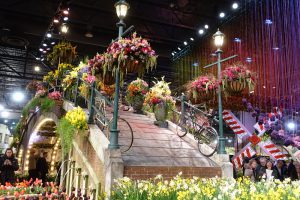
While membership in the Netherlands Society of Philadelphia dwindled at the end of the twentieth century, groups such as the Netherlands-America Association of the Delaware Valley (NAADV) continued to preserve and promote Dutch and Dutch-American culture in the region. Founded in 1957 by Dutch immigrants living in the area, the NAADV sponsored educational events, hosted language groups, and celebrated holidays like Koninginnedag (King’s Day) and Sinterklaas. In 2017, the Philadelphia Flower Show celebrated the world-renowned Dutch floral industry, working with floriculturists, designers, and sustainability experts from the Netherlands for the exhibition “Holland: Flowering the World.”
Through both permanent settlement and ongoing international connections, the greater Philadelphia region and the Netherlands have enjoyed close connections since the seventeenth century. Although the colony of Nieuw Nederland was short-lived, the legacy of early Dutch settlement in the Delaware Valley remained evident in place names and the efforts of groups such as the Netherlands Society of Philadelphia. With the Dutch as steady diplomatic and economic partners, Philadelphia has benefited from economic and cultural exchange with the Netherlands for more than four centuries.
Laura Michel is a Ph.D. student in History at Rutgers University—New Brunswick. She studies issues surrounding crime, poverty, and philanthropy in the early modern Atlantic World. (Author information current at date of publication.)
Copyright 2017, Rutgers University
Gallery
Backgrounders
Connecting Headlines with History
- Rare Vermeer painting makes a rare appearance at Philadelphia Museum of Art (WHYY, October 28, 2013)
- Guided by impression and free association, Dutch artists chart emotional map of Philly (WHYY, May 27, 2014)
- Dutch treats in store for Philly Flower Show visitors (WHYY, February 15, 2017)
- Dutch novelist Pia de Jong gives the world a window into America (WHYY, March 29, 2017)
